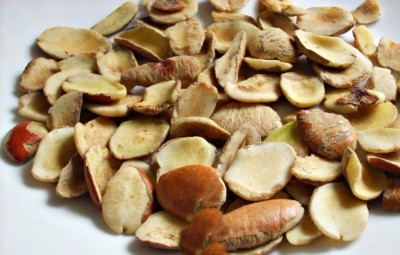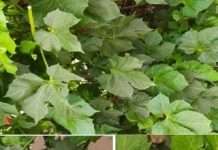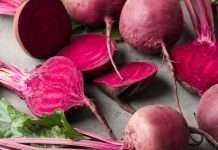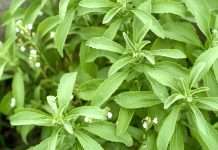
Ogbono, botanically known as Irvingia garbonensis (Fam. Irvingiaceae) can be found in farmlands, forests or bushes in the dry and wet tropical zones, such as Nigeria, Angola and Southeast Asia. It is also called wild mango, bush mango, dika, African mango, dika nut and ogbono nut. It is called goronor by Hausa people, ugiri or ogbono by the Igbo people and apon or aapon by the Yorubas.
Constituents
Scientists have proved that ogbono seeds contain calories, dietary fibres, fat, carbohydrates, protein, amino acids (like tryptophan), water, minerals, such as calcium, iron, potassium, zinc, sodium, magnesium and phosphorus, fatty acids (myristic acid, lauric acid, oleic acid, palmitic acid and stearic acid), antioxidants, and vitamins B and C. Preliminary phytochemical screening of the aqueous leaf extract of Irvingia gabonensis shows that it contains phlobatanins, saponins, phenols and tannins.
Preparations
Ogbono is available as fruits, nuts, seeds, and bark. The fruits and seeds may be used fresh or dried. The sweet pulp on the fruit can be juiced or used for making smoothie, jelly, jam and wine – used fresh or as dry powder packaged in the form of capsules. The bark can be prepared as a decoction alone or combined with palm oil. The seeds can be pressed for vegetable oil or margarine. The dried ogbono seeds can be ground and used for preparing different dishes.
Pharmacological actions and medicinal uses
Studies have shown that ogbono aids digestion and prevents digestive disorders, including constipation, by adding bulk to the stool and improving bowel functioning. Studies also showed that African mango extracts inhibits ulcer formation in rats by increasing mucus production in the stomach. The dietary fibre in ogbono helps in reducing “bad” low-density lipoprotein – LDL cholesterols, simply by binding to bile acids located in the intestine.
Multiple studies have shown that the presence of catechins make ogbono seed very effective in regulating insulin levels and lowering blood sugar levels, which in turn lowers the risk of diabetes and assures safety in obesity. Several studies have, respectively, supported the assertion that ogbono is good for weight loss because it blocks the action of amylase, causing the body to absorb less sugar; inhibits glycerol-3-phosphate dehydrogenase, preventing the conversion of blood sugar into fat; and helps in increasing the levels of the hormone adiponectin and leptin, both of which reduce appetite and promote weight loss. The fibre content of ogbono also promotes weight loss by suppressing appetite.
Eating this fruit can also help control anxiety, stress, depression, and other factors that may affect the overall mood because of the presence of tryptophan, which enhances the production of the neurotransmitter (serotonin) associated with the promotion of good mood, libido, concentration, and sleep quality.
Studies also reveal that the water extract of the bark can help reduce pain caused by both heat and pressure. Thus, the leaves of this tree are used, mainly by Igbos, to prepare a concoction that is used in treating fevers.
Studies support that the methanolic extract of Irvingia gabonensis can be used for treating bacterial and fungal infections. The powdered kernels can be used as astringent applied to the skin to soothe burns and also to reduce bleeding from minor abrasions. The stems of the tree can be used as chewing sticks for cleaning teeth.
Adverse effects
No serious adverse effects have been associated with ogbono soup. However, ogbono soup can produce flatulence, vomiting (due to insufficient pepper) in certain people.
Economic uses and potentials
One paint bucket of ogbono costs about N9,000.00; one milk cup costs about N600.00. There are prospects for ogbono cultivation in sales, distribution, pharmaceuticals, construction, dye, cosmetics, fodders, shade, prevention and control of erosion, and also for ornamental and beautification purposes.
References
Nwokolo C (2020). Seven amazing health benefits of Ogbono (Irvingia gabonensis). HealthGuide.ng. Available at: https://healthguide.ng/health-benefits-ogbono/. Accessed: August 29, 2022.














How can I communicate with you directly